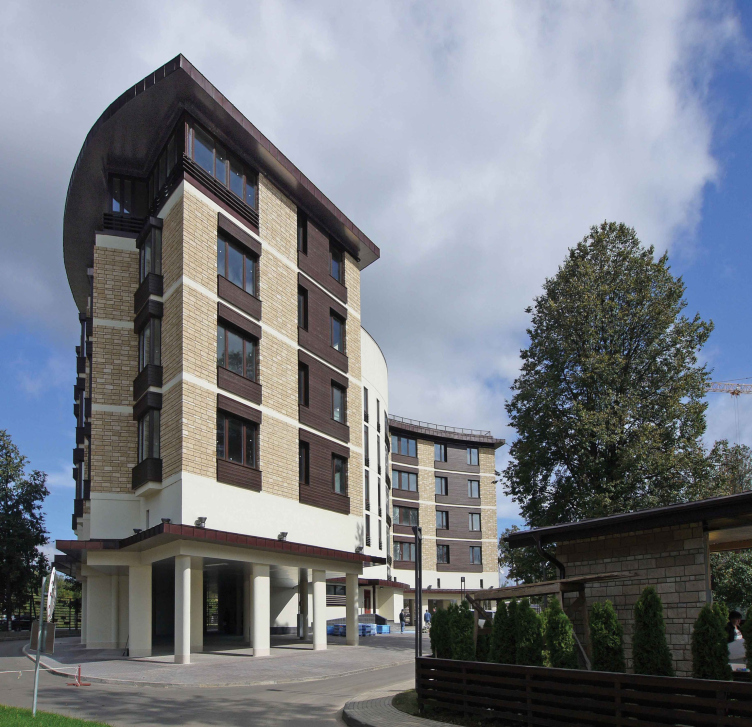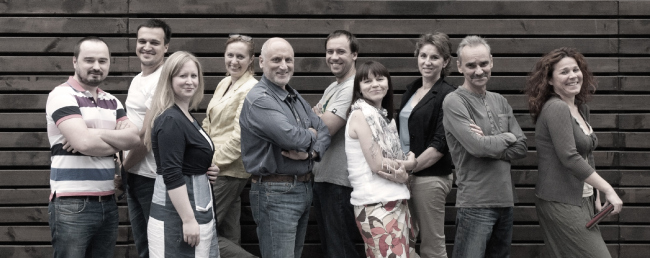
Senior managemant of "Architecturium" Studio. Vladimir Bindeman is in the center © "Architecturium"
Archi.ru: Vladimir, let us start from the start: who founded "Architecturium"? How did you come up with this name and which was the first project that your studio did?
Vladimir Bindeman: "Architecturium" was founded in May of 2004. By that day, it had almost been ten years since I quit working with official and municipal structures and was mainly doing private commissions with a group of like-minded colleagues of mine. In the spring of 2004, our team won the contest organized by "Modern House" magazine for the townhouse settlement of "Novo-Arkhangelskoe", and it was this victory that stirred us to found a fully-fledged studio of our own. As for the name, this was a "set piece" that I had up my sleeve - it rings of "impressive" Latin terms that end in "ium". Besides, back in those days I was a great fan of the Russian rock-band called "Aquarium"... So, now we have a way of telling out customers and colleagues that "Architecturium" is the place where architects and architecture live at peace with one another.
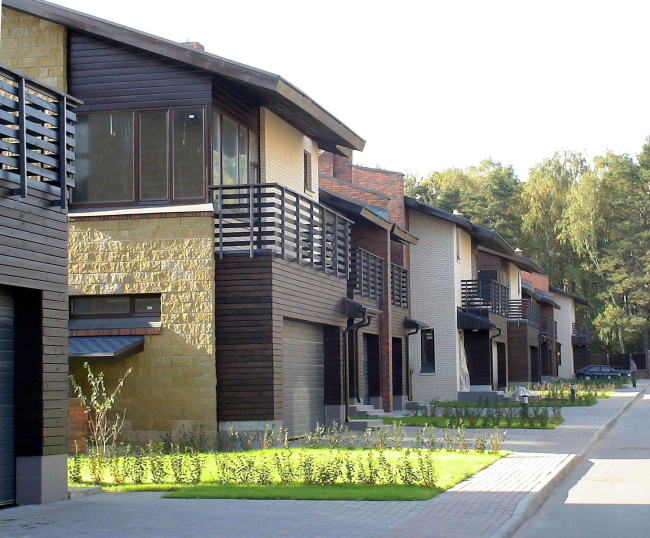
Novo-Arkhangelskoe Settlement © "Architecturium"
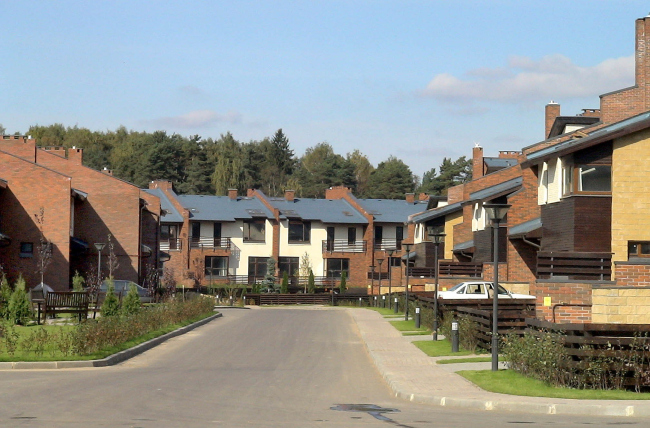
Novo-Arkhangelskoe Settlement © "Architecturium"
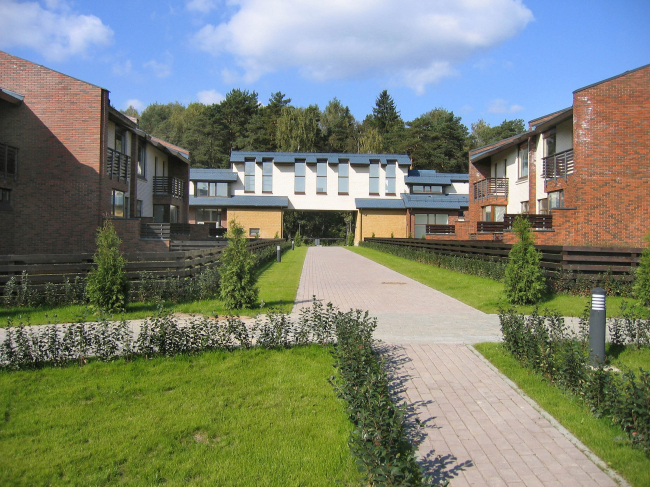
Novo-Arkhangelskoe Settlement © "Architecturium"
- In other words, "Novo-Arkhangelskoe" became for your studio the "kick-off" project that predestined your specialization in townhouse settlements?
- This project did not bring us any revenue but it did bring us recognition, thanks to which we later on got a lot of customers with orders for designing townhouse settlements. And even our today's "multisession" project - the Olympian Village Novogorsk - came to us thanks to "Novo-Arkhangelskoe". As for the subject of townhouses, I was into it ever since I embarked on my freelance career in the early 90's, and one can safely say that I am still exploring this idea - "from a cottage to a townhouse block". Back in the 1998-99 I was literally "burning" with this theme, offering it to every investor and trying to convince them that a townhouse is a lot more dependable than a villa and is a lot better suited for the Moscow suburbs. This resulted in the first three houses for "MIEL" company in Romashkovo, designed and built in 1999-2000.
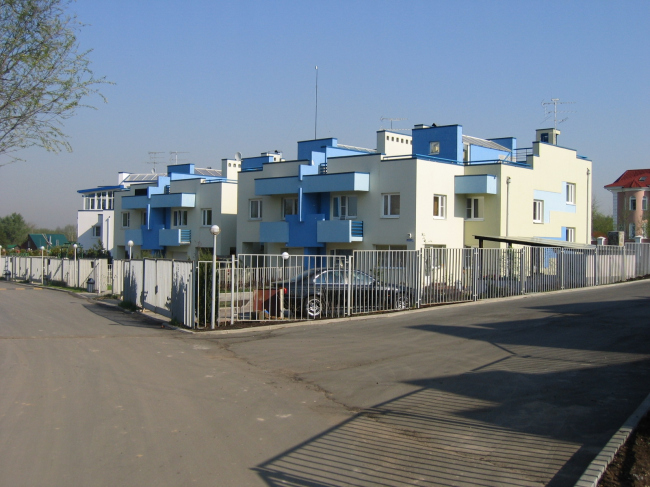
Townhouses in Romashkovo © "Architecturium"
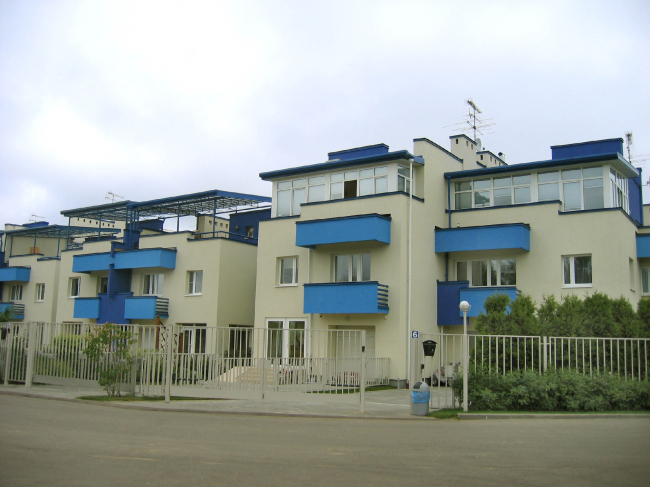
Townhouses in Romashkovo © "Architecturium"
After that, there was a contest with the same investor, only this time for "Barvikha-Club" and the already-mentioned "Novo-Arkhangelskoe". In the latter we did some serious work with the block planning options and came up with give different combinations. Then we did the settlements - "quarters" - for "METRA-Development" - "Ilinsky" and "Rizhsky" where we perfected our expertise and architectural style. And, as for the projects of "Olympic Village", they incorporated all the experience that we accumulated.
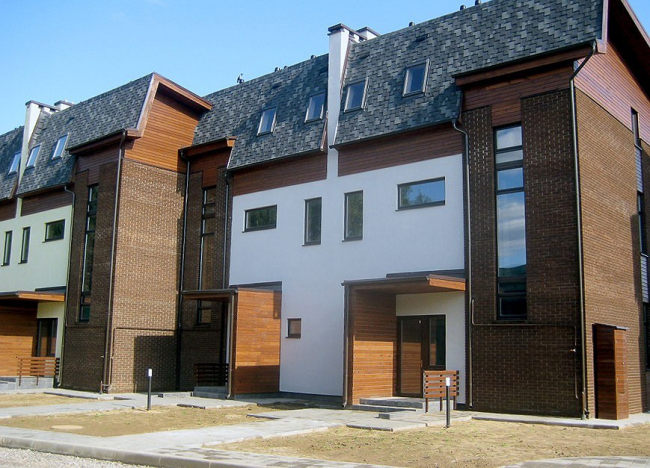
"Ilinsky Quarter" © "Architecturium"
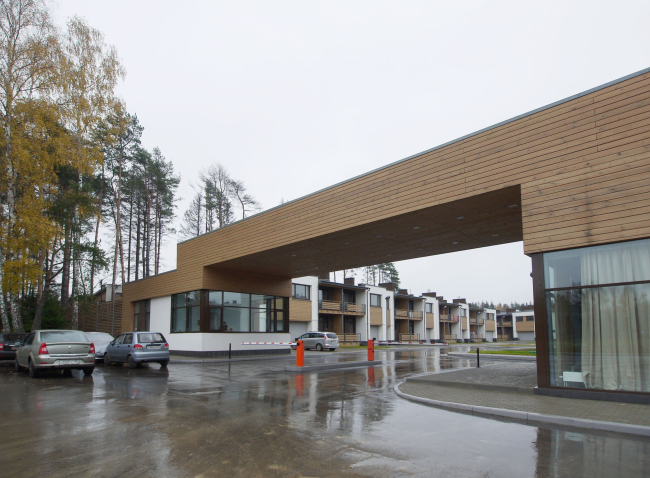
"Rizhsky Quarter" © "Architecturium"
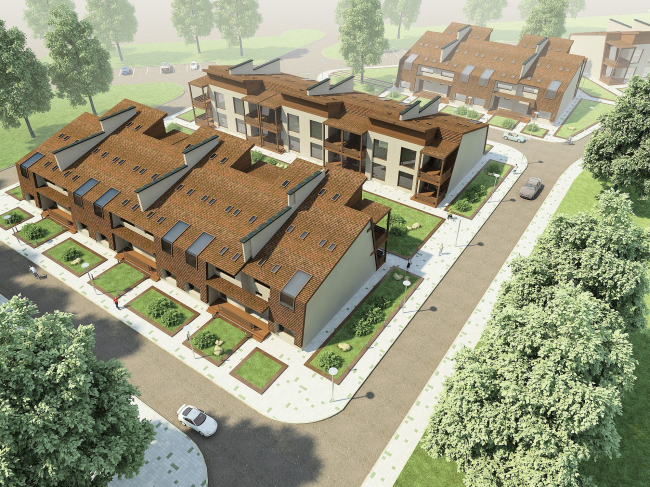
Kuzminskoe Settlement © "Architecturium"
- What was it about the idea of townhouse that attracted you so much?
- First of all, its planning possibilities. The variability of its planning solutions that provided an opportunity to create a cozy little city. This type of opportunity is not provided by the cottage settlement. Townhouse planning is something that you can describe with the term "community" - which you cannot say about the heavily fenced villas. You can arrange townhouses to make streets, courtyards, and even squares. It was a truly exciting thing for me to do.
- You seem to be speaking about it in the past tense. However, "Architecturium" still does townhouses, it would be enough to mention the third stage of the "Olympic Village Novogorsk" or the settlement of "Andersen" that, along with the multi-story buildings, includes townhouses as well.
- I hope that these two projects will be out last statement on the subject of this particular typology. Now I am really sceptic about this subject because I think that the townhouse is just not meant for Russia. At least, at the present stage of development. Objectively, the townhouse is mean for tolerant communities, open-minded and friendly. Also, meaning-well and law-abiding people, simply because living in a block house presupposes respect of the neighbors to one another, as well as to the house itself. Living "wall-to-wall" at a plot that is on an average nine meters wide makes you learn how to say hello to your neighbor and learn how to be cool about his children playing noisy games. Respect means that you will not build a gazebo the size of the whole plot and getting in the way of everybody's light, that you will not uglify the house with "outlaw" annexes and all.
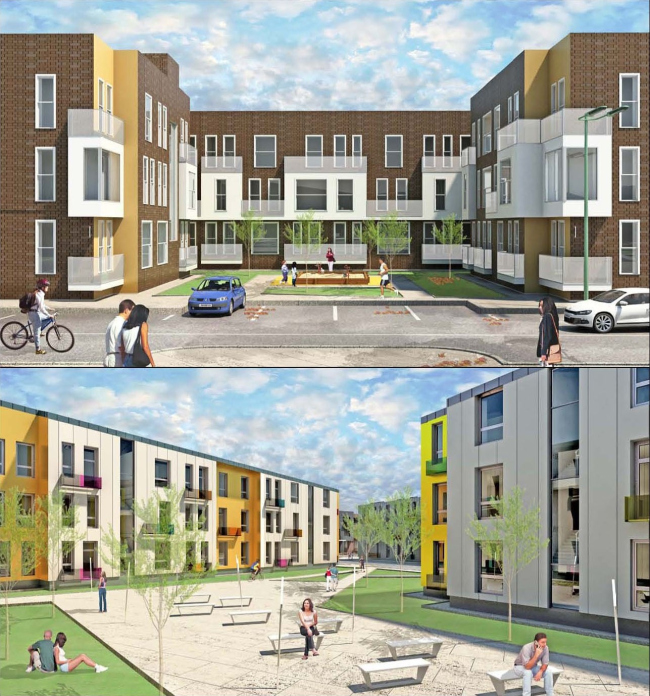
"Andersen" © "Architecturium"

"Andersen" © "Architecturium"
The thing is that the buyers of townhouses are a very specific segment of the country real estate market. For many people, a townhouse is "more than a flat, yet less that a villa" - but, because they still want to live in a villa, they treat this house that they've purchased as their own one. The percentage of the rebuilt and reprinted townhouses beats any power of imagination: neither us, nor our colleagues that build townhouses can be sure that they will see them in the original state half a year after the purchase. And it is not because the planning solutions leave much to be desired - it is about the buyers and the real estate agents. I once asked one of such customers a question: "If you want to remodel so much and build extra stuff worth half of the plot, why did you not go and buy an individual villa?" The answer could have knocked me down with a feather: "Actually, I did build a villa! And now I want a townhouse!" No comments.
So, generally, as the pioneer of the "townhouse" movement, I can safely say that over these years I've come to a complete denial of it. Simply because of the fact that your work on the project of blocked houses boils down to trying to figure out what the future owners might want to rebuild - and eliminate such a possibility. I cannot even afford a flat roof: take Romashkovo, for example - all the flat roofs were overbuilt...
- Perhaps, the expansion of Moscow could somehow improve the situation? As far as I understand, after the expansion of Moscow the proverbial "Andersen" turned into a Moscow project and it is common knowledge that Moscow is a lot more attentive to the process of implementation of the approved projects than its region is.
- I cannot help but admit: things became a bit more organized after the southeast area was annexed by Moscow. And the same client of "Andersen", for example, really hopes that his buildings will be kept in the original shape and form, while we, in turn, hope that we have a right to expect that the territory planning that we designed will be implemented in full measure - which will give our project the desired integrity and the comfort of the environment that is great to live in.
- If you are through with the townhouse then what typology is the most interesting to you today?
- This is still the idea of integrated development of the territories, only now it's low-rise and medium-rise housing. In particular, I would really like to overcome today's poverty of planning solutions offered by the developers. It's pathetic that now it is only studio and double-room apartments that are designed - just because they are easier of all to sell. The developer's reasoning is really on a grassroots level: "If somebody needs more, they are going to buy two apartmnents". But we do realize that the house is not elastic! A great three-room apartment is not equal to a studio and a double welded together: in the bearing walls the owners will be at best allowed to make a standard doorway. This is why, by the way, I always ask my designers to foresee these things in advance and design more columns and fewer pylons. In Novogorsk, for example, we had to move the reinforced-concrete pylons.

Apartment house in the settlement of "Olympic Village Novogorsk" © "Architecturium"
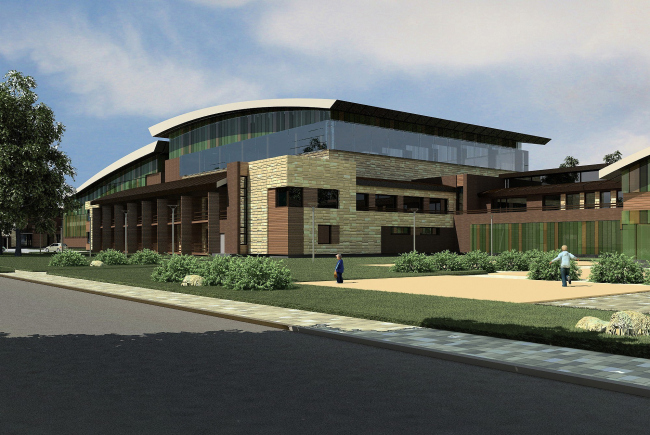
Residential and sports complex "Olympic Village Novogorsk" © "Architecturium"
- In one of your interviews you said that now architecture could be bought and sold - the way I see it, this is a very accurate description of what you seem to be describing...
- It is enough to hear the modern developers speak about architecture. The things that we put out souls into - they just call them "product", no more, no less. And this "product" is only considered successful if it sells quickly. Generally, I have to mention at this point that the average project is influenced by the sales departments and their leaders all but totally, and the final decisions is made not by this or that person but by a "board if directors". Besides the obvious fact that it is very inconvenient and the fact that it takes them forever, it speaks about the level of trust to the professionals: today it's simply non-existent. And, while the main purpose of the designer is quality architecture, the purpose of the developer is selling the product as quickly as possible. Probably, it is always the case with the forming capitalism. I am reading right now "Delirious New York" by Rem Koolhaas - in the 1930's, in the USA, it was the same, even the Rockefeller Center was many times rebuilt to satisfy the leaseholders. I think that fighting it is only possible by personal connections and convictions.
- So this means that there are customers out there that can be persuaded into doing the right thing?
- Very few and far between. There are too many heartless manages out there that will listen politely to everything you have to say but then will fall in with the decision of their board. Today, regretfully, there are no bright personalities in the developer business. The "authoritative" leaders have their weak and strong points - but one thing us certain: creative people form a trend, and passive people follow suit in its wake without caring too much about things.
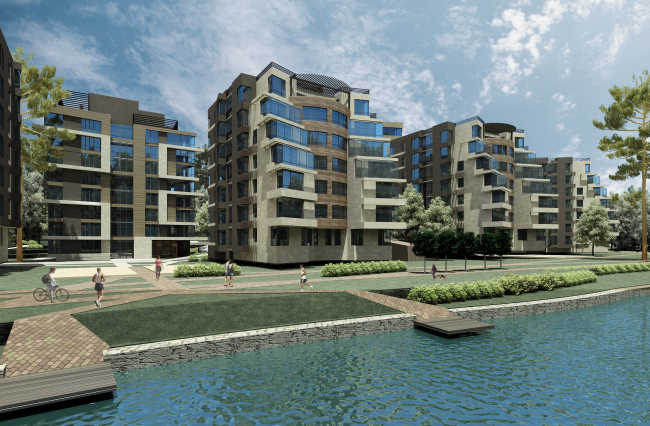
Residential complex "Olympic Village Novogorsk. Apartments" © "Architecturium"
- How is the working process organized in "Architecturium"? Is this all about the team work or is it a team that only works under your supervision?
- Initially, of course, it was only one team. Speaking, again, of "Novo-Arkhangelskoe", we did it as a team of five people. Right now we have a few teams - but they do not a fixed lineup because they are formed for each specific project. Right now, there are 30 people on our studio, 4 of them being designers, 4 office managers, and the others are architects, including five chief architects of the project.
- How actively are you personally involved in the development of the projects by your studio?
- I, as always, am responsible for the general architectural and planning solution, going through the options and choosing the best one. And, since I am the "playing coach", I do the sketches myself. This applies to the town-planning, as well as the architectural projects. At the same time the chiefs, as well as all the architects of our studio that want to propose an idea of their own, are entirely welcome to do so, furthermore, I always encourage them to do that - the way I see it, this is about the only way to come up with a worthy solution. Generally, the more I live, the more I am convinced that the modern architecture simply cannot be based on the architect's taste alone. Especially when it comes to town-planning! I will give you a simple example here. There was a time when I thought that all the roofs of low-rise housing must be blue. "Novo-Arkhangelskoe" is done in this way, as well as the Sochi health center, and I always insisted on that point, making the customers comply with my taste and overpay for the building materials. Now, looking back, I think that that it was voluntarism in its pure form! So, generally, it is a better thing to do trying to find rational, and not emotional, justification for your architectural solutions.

Residential complex "Olympic Village Novogorsk. Apartments" © "Architecturium"
- Are there orders that "Architecturium" chooses to turn down?
- Actually, we all but never get to do stand-alone projects. So it turned out that we mainly work with territories doing integrated housing projects. Now I would probably feel strange getting down to work on some separate project. Well, I might do so in Moscow, maybe. Even in this case, however, we would have started our work from the inevitable survey of the town-planning context and would have ended with the landscaping. Oh, yes, by the way, if the customer is not ready to commission us with the landscaping job - this is when we turn the project down. We firmly believe that landscaping is the fifth facade of architecture, even more important than the roof, and it needs to be the direct continuation of the ideas and visions that are there in the very soul of the building.
- What qualities must an architect possess to be admitted to work in your company?
- Our main requirement is that this person should love and understand modern architecture. And we do not like the "I've-seen-it-all" type.
- And, speaking of the modern western architecture, which examples of it would you like to bring over to the Russian soil?
- I think that the architecture that we have here is quite up to the western standards. The quote-unquote classicism has long since stopped being a mass trend and this seems to me almost the most important achievement of the last two years. Remembering back to the time when we exhibited with "Romashkovo" at "Under the Roof" show back in 2002, our stands were all surrounded by castles and chalets - and now they are very few and far between. So, if we are to borrow something from the West, this must be the respect to the architect's work - both from the customers and the society.















